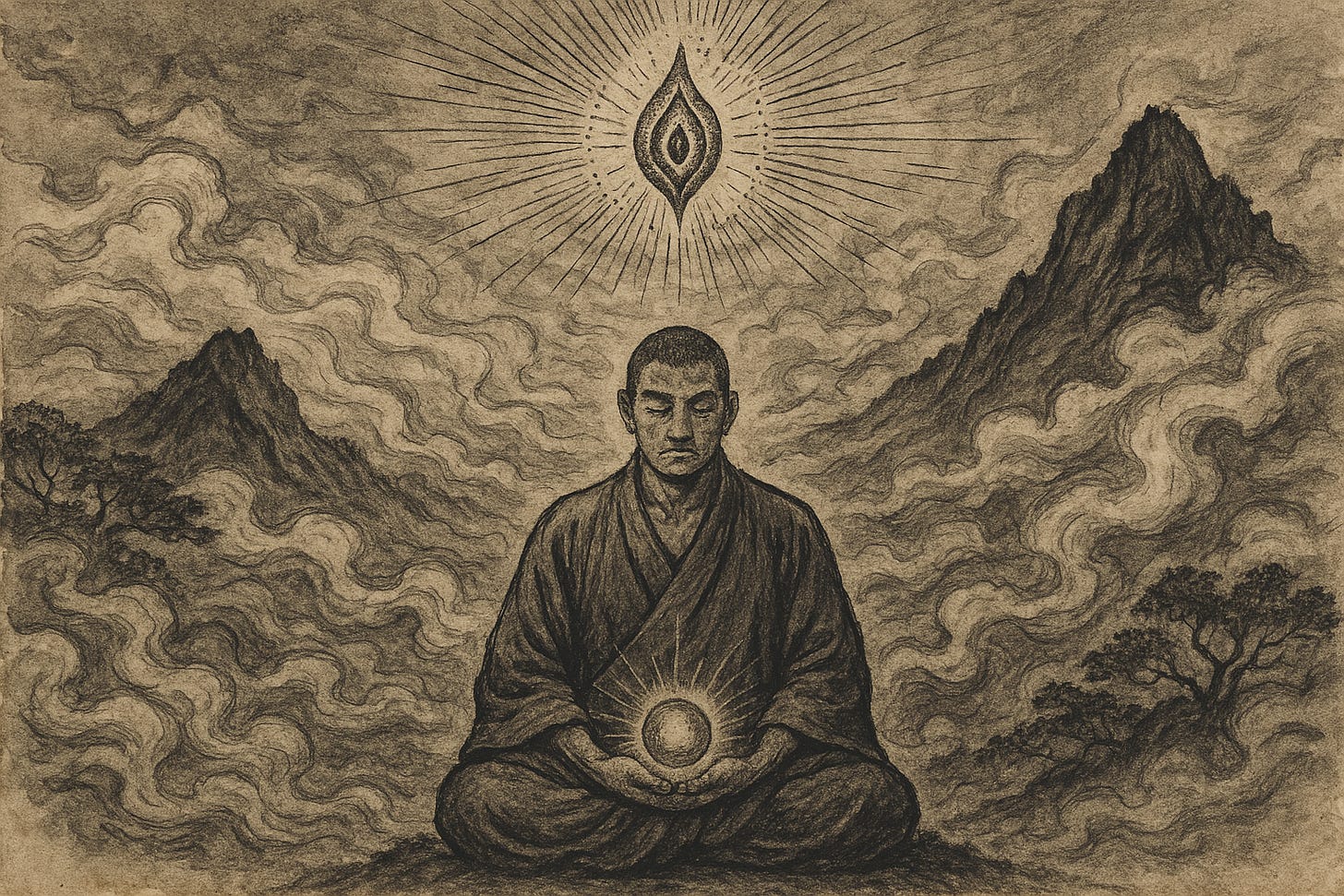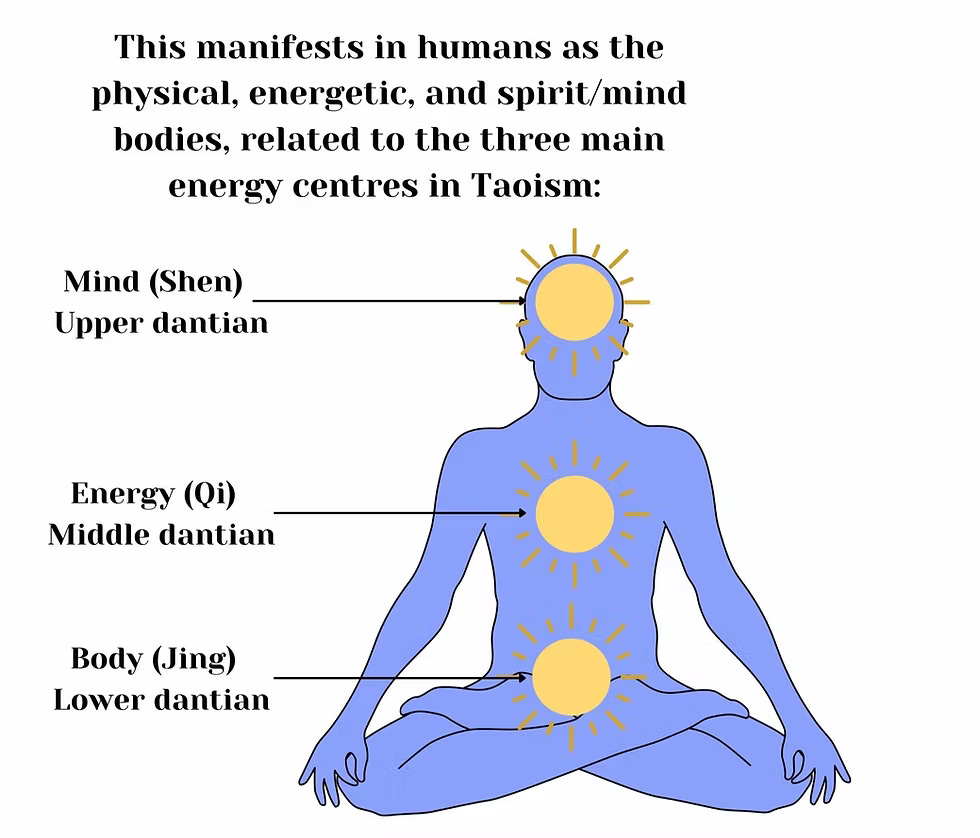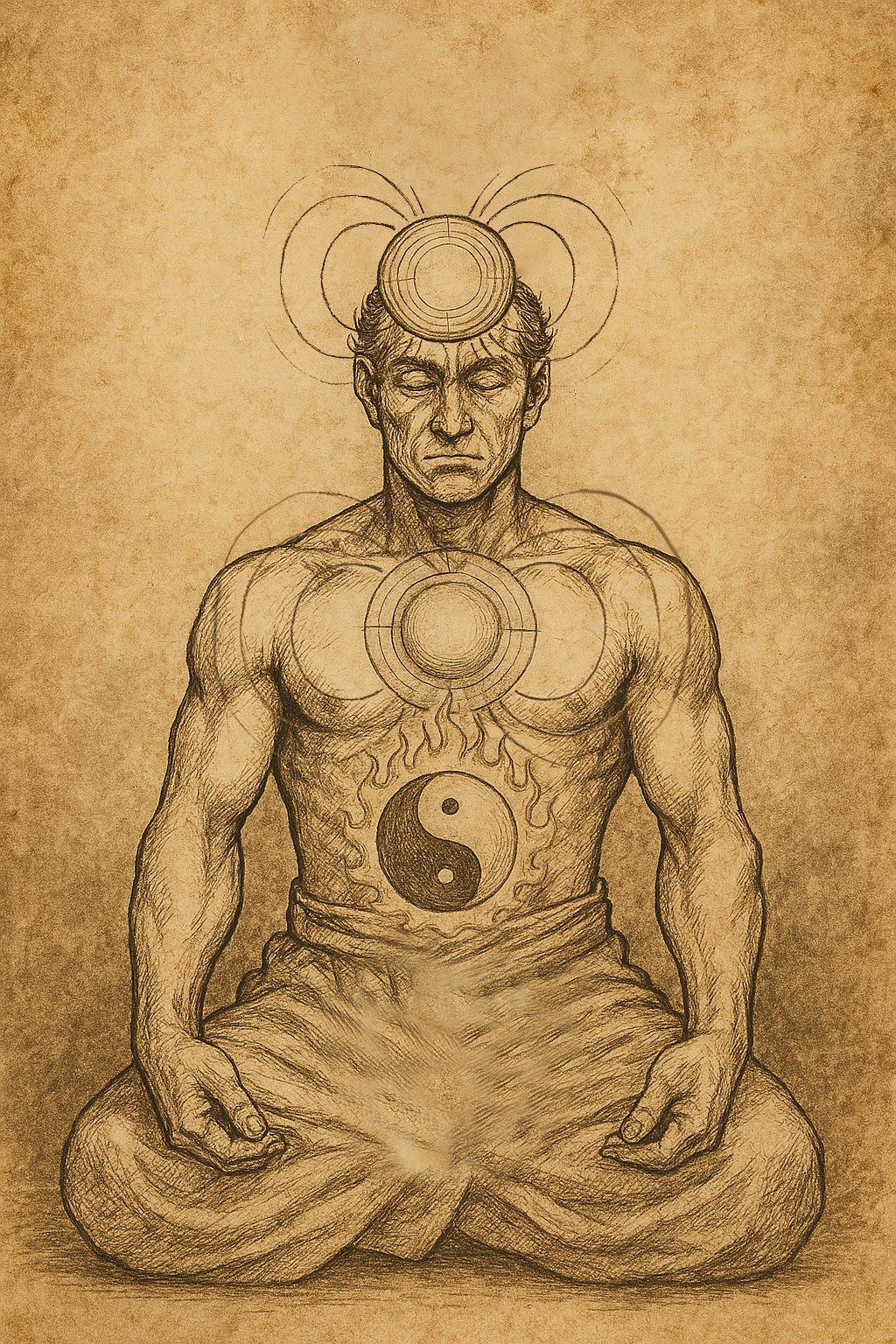A big disclaimer, before proceeding further:
No. In this article, you are not going to learn how to “Kameameha” or “Hadoken” the opponent, unfortunately. Personally, as a kid, I always hoped one day I would learn them. Perhaps I still do. If you figured it out, please teach me. 😂
Jokes aside, today we will see the concept of Ki 気 on a deeper perspective as far as our internal energy, power and inner state is concerned. I will approach it be it from ancient doctrines, like that of Naiki of the Samurai, and more scientific one like the streamings theory tested by many contemporary scientists. Also, I will not leave without mentioning personal experiences. So rest assured, this writting will be as nonsense-proof as possible.
This article will be longer than usual, but I promise it will be worth it. 😊 I decided to structure my years of study and experience about it, after getting a lot of request over the last months. So, my suggestion is, to go somewhere quiet, maybe play a music that you like, and enjoy the read. 👊
What is the meaning of KI?
“Fill yourself with ki.” (Ki o mitasu)
This was the advice of Mataemon Iso, a well-known jūjutsu master.
In Japanese tradition, Ki (気) is the vital force that warriors cultivate for strength, focus, and presence. It is also known as Chi (Qi) in Chinese or Prana in Indian yogic teachings. But the interesting thing is, that the word “Ki” has no exact equivalent in English. Some approximations that one can find for this term are: energy, spirit, aura, vitality, or inner strength.
According to ancient teachings, it is an invisible current that animates life and infuses our every breath and action. Many healing cultures explored it so they could boost vitality and health, but eastern warrior cultures developed a way to weaponize it and build it up as inner power.
Mataemon Iso, the jūjutsu master I mentioned before, described it as a force to be filled and mastered, a bridge between mind and body, and a power that can influence the world around us.
Understanding Ki in Three Dimensions
To clear a misconception: In this Article, I will use the word “Spirit” to refer to Ki, and the word “Soul” to refer to our Transcendet Self / Higher Self.
From my studies, It is clear that we can understand Ki in three main dimensions. These are:
1- Energy.
2- Frame of Mind, which leads to certain a spiritual/psychological state
3- Influence of our Spirit. Presence.
Let’s explore each one of these aspects.
1- Ki as Energy (Vital Life Force)
Ki is first and foremost vital energy, the life force that flows through living beings. In Eastern thought, it is the animating spark present in everything from the smallest creature to the cosmos itself. It’s transcendent (beyond time and space, and beyond life) source, is a spark that was called by many names in different civilizations, like Atma in yogic tradition, or Atmu in Ancient Egypt. But when manifested in time-space, or Samsara, as they call it in the East, it takes the “FORM” (figuratively speaking), of Ki / Chi/ Prana.
Atma, the divine spark, exists beyond time and space. It manifests in our world as Ki, the vital energy that gives life. When a body has Ki, we consider it alive, and without Ki, it is lifeless. Ki is the result of Atma's will, our higher self or soul, if you will, acting in this world. Atma lights the flame of life in us when we are born, like a candle, and this flame cycles on and off like a pulse.
Candle on: Life 🔥
Candle off: Death 💀
But the spark (Atma, Higher Self) remains "forever strong, “somewhere”…
In other words, Ki is energy of this world - not necessarily a sacred spiritual one-which or Soul borrows as it incarnates in a biological machine.

Like the Chinese Qi and Indian Prana, Ki is believed to have its center at the “Dantian or Tanden”, -depicted like a pool (or wheel) of Ki two inches below the navel- and circulates through the body, creating one’s vitality and aura.
A person brimming with Ki appears “full of life” – healthy, vigorous, Genki (a Japanese word for healthy that literally means “original ki”).
By contrast, weak or stagnant Ki is associated with fatigue and illness; indeed, the Japanese word for sickness, Byōki, literally means “sick ki.” That’s why in traditional medicine and martial arts, Ki is treated as something that can be cultivated, increased, and directed.
We might think of it as an inner battery or bioelectric field that powers our presence. People instinctively charge this battery through breath, which is crucial to our energetic and physical metabolic process.
Trained warriors (but not only warriors) takes this a step further. They learn to optimize this battery through training, meditation, and breath techniques, filling oneself with Ki until it radiates a strong life-force or aura.
This first aspect corresponds to the Lower Dantian (Figure 4).
2- Ki as Frame of Mind (Attitude and Intent)
Ki is also manifested as mental and emotional state. Hence, the famous quote:
“Mens sana in corpore sano”. (a healthy mind in a healthy body)
It reflects one’s frame of mind, the attitude, intention, and focus that one carries. In Japanese culture, mind and energy are deeply intertwined:
“Form follows ki, and ki follows the mind,”
as a martial adage goes.
A focused, positive mind generates strong, vibrant Ki; a disturbed or negative mind breeds weak or “twisted” Ki. Samurai texts often use Shin (mind-heart) and Ki (energy-spirit) almost interchangeably when speaking of one’s spirit. For example, a calm mind is said to produce calm Ki, while fear or distraction will “freeze” your Ki and make you awkward.
Modern psychology proves again and again this connection: your mindset and expectations strongly influence your energy levels and performance. An interesting illustration is given by a study of Olympic athletes. Many researchers found that winners had a positive, relaxed mental state before matches, whereas those who lost were often anxious or depressed. Meaning: their Ki was disturbed by a negative mind.
In everyday life too, we notice that when we are enthusiastic and optimistic, we feel “energized,” and when we are dispirited, we feel drained. Also, when we feel sick, and something we emotionally enjoy comes along, it becomes easier to come out of bed and recover faster.
Another story, I shared in the book “The Secrets of Willpower”:
Years ago, in Defreggen, a well-respected businessman named Simeter Jeggl fell gravely ill at the age of 80. He was an experienced businessman, known for his cunning and passionate speculation.
Within a few days, his condition deteriorated rapidly, and the doctors had lost all hope. In his final moments, an old business partner visited his bedside to discuss a potential venture. This encounter proved to be fortuitous.
Fueled by the force of intent and passion, Simeter Jeggl, on the brink of death, sprang out of bed, dressed himself, got into a car, and, together with his partner, finalized the business agreement.
Following this, he went on to conclude several more ventures successfully…
Thus, Ki can also be understood as one’s mental-emotional energy. Cultivating a warrior’s spirit means cultivating the right state of mind – one of clarity, courage, and unwavering intention – since that mental frame immediately impacts the strength of one’s Ki.
This second aspect corresponds to the Upper Dantian (Figure 4).
3- Ki as Influence (Presence and Transmission)
Finally, Ki manifests as a force that can be projected outward and influence others PSYCHOLOGICALLY. Not by knocking people out like many “bullshido masters” scammers claimed, before being exposed.
I personally have challenged some people who claimed to strike people with Ki, and came out unharmed. But I can say for sure that I have faced some people - many of whom didn’t share my understanding of Ki- who had such an intense presence that they exerted real pressure on me. Whether it was during martial arts combat or high-stakes business negotiations, their energy left an undeniable impact. Probably, if I didn’t possess the knowledge about Ki, they would have overwhelmed my psychological state, as some have done before I started doing some inner work.
Think of it as a presence or charismatic energy we project into the world, and in return it plays a powerful role. For the samurai, when someone is said to have a “strong Ki,” it refers to an aura that can inspire comrades or unsettle foes without little, or not a single word. This is Ki as Ryoku, an outward force. Essentially, your Ki can extend beyond your physical self to influence those around you. We've all felt this before: a leader whose sheer presence fills a room with confidence, or someone whose negativity seems to drain everyone's energy. The key difference lies in their Ki. To the samurai, charisma wasn't mystical, it was the projection of a powerful Ki outward.
The good news is that this Ryoku/Power, can be cultivated by anyone. In the martial arena, warriors trained to extend their Ki to unsettle an opponent, sometimes described as killing/destructive intent or Ki-ai (focused shout/energy). And unlike the exaggerated practices seen in some western karate dojos, where Kiai is reduced to a physical shout that often feels more comedic than fearsome, the samurai understood Ki-Ai as the shout of the spirit, a silent, voiceless shout. This interpretation clearly reflects the influence of Zen philosophy.
A famous maxim states:
“One whose Ki is unshakable can triumph without drawing the sword.”
In essence, Ki encompasses the impact of your spirit on others. It’s a power that can be felt, whether as quiet confidence, authoritative command, killing intent, compassionate calm, etc. Someone filled with positive Ki will naturally uplift others and command respect, while someone with chaotic Ki spreads tension. This transmissible quality of Ki is why training the spirit was as crucial as training technique in warrior traditions.
We humans function a bit like antennas. Often without realizing it, we send out and pick up signals from others' "Ki" (energy), while our own Ki can also be influenced by external signals. Dr. Ibrahim Karim's fascinating scientific research on Bio-Geometry explores this phenomenon in greater depth. You can check it out if you’re interested.
This Third aspect corresponds to the Middle Dantian (Figure 4).
In summary
In summary, Ki is at once life-energy (Lower Dantian), spirit/mind (Upper Dantian), and influence (Middle Dantian). It is an “extraordinary form of personal power” discovered by Eastern culture and developed by Eastern warrior traditions for centuries.
The Japanese expression Ki o Mitasu (Fill Yourself with Ki) means to charge oneself in all three senses: to energize your body, focus your mind, and strengthen the force you emit.
Next, we will explore how Ki works in practice, both in ancient doctrine and in modern understanding.
Continues in 👉 Part 2
➡️ PS: As always dear friends, if you liked reading this, feel free to click the ❤️ button on this post, so more people can discover it on Substack. 🙏
📌 For those who visit for the first time: 𝙏𝙝𝙞𝙨 𝙥𝙖𝙜𝙚 𝙝𝙖𝙨 𝙖 𝙢𝙞𝙨𝙨𝙞𝙤𝙣.
I am dedicating my life to developing practical psychological and philosophical methods to integrate the Way of the Warrior into daily life.
But this cause can achieve more, and for that, I need your support.
Your contribution can help me dedicate more time and resources to conduct research and share more work with those who need to delve deeper into the Way of the Warrior.
If this resonates with you, I invite you to support my cause on Substack by becoming a contributor.
🔻📕Additional Resources:
If you've found my article helpful and inspiring and want to delve deeper into the subjects of psychology, philosophy, the warrior ethos and zen, I recommend checking out my books:
📕➡️100 thoughts for the Inner Warrior
Whether you're seeking personal growth, to fortify your inner strength and mental resilience, or simply a deeper understanding of the warrior ethos, "100 Thoughts for the Inner Warrior" is a valuable resource that can guide you on your journey.
This is my latest book, and it’s packed with proven psychological techniques to help you access your mind’s hidden reserves and build the willpower, tenacity and discipline needed to face any challenge. From strategies to quiet the inner voice of self-doubt to exercises that master the art of delayed gratification, each chapter guides you on a path toward mental, physical and emotional mastery.
👉 Furthermore, you can consider joining my WhatsApp channel via this link if you don’t want to miss future updates.









Okay so clock this. I had to stop reading for a sec and provide this example of Ki in action. Reading The Sword of No Sword about Zen Master Takuin taught me a lot about how Ki is a tangible energy that can impress itself on the minds and physical body of others as well.
It’s said that he had so much energy he once ran training drills for 24 hours without stopping while having no all his students attack him at once.
One student went to sleep and woke in a cold sweat. He said that he had a nightmare of Takuin standing over him like a mountain with his eyes blazing with fire. He said his aura felt impenetrable.
Ima finish reading now, just thought it was cool that it correlates with what you said about the physical and psychological components of Ki.
"Standing amidst heaven and earth connected to all things with ki". --- O'Sensei
I really enjoyed this realistic perspective on ki. I look forward to part two.